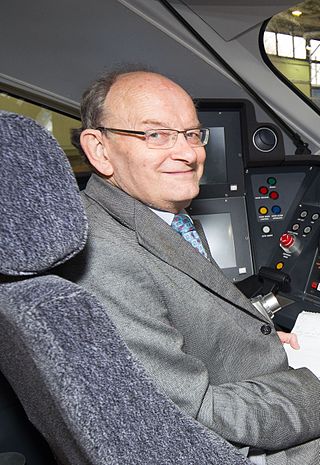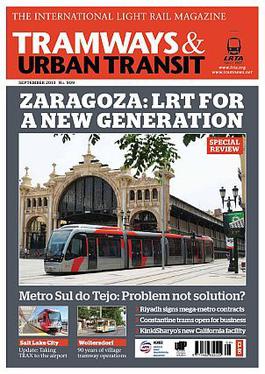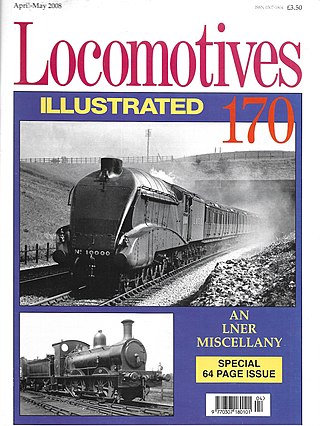British Railways (BR), which from 1965 traded as British Rail, was a state-owned company that operated most of the overground rail transport in Great Britain from 1948 to 1997. It was formed from the nationalisation of the Big Four British railway companies, and was privatised in stages between 1994 and 1997. Originally a trading brand of the Railway Executive of the British Transport Commission, it became an independent statutory corporation in January 1963, when it was formally renamed the British Railways Board.
The Western Region was a region of British Railways from 1948. The region ceased to be an operating unit in its own right on completion of the "Organising for Quality" initiative on 6 April 1992. The Region consisted principally of ex-Great Western Railway lines, minus certain lines west of Birmingham, which were transferred to the London Midland Region in 1963 and with the addition of all former Southern Railway routes west of Exeter, which were subsequently rationalised.

The Railway Magazine is a monthly British railway magazine, aimed at the railway enthusiast market, that has been published in London since July 1897. As of 2010 it was, for three years running, the railway magazine with the largest circulation in the United Kingdom, having a monthly average sale during 2009 of 34,715. It was published by IPC Media until October 2010, with ISSN 0033-8923, and in 2007 won IPC's 'Magazine of the Year' award. Since November 2010, The Railway Magazine has been published by Mortons of Horncastle.

The British Rail Class 90 electric locomotives were built for mixed-traffic duties, operating from 25 kV AC overhead lines and produce 5,000 bhp (3,700 kW). They weigh 84.5 tonnes and can typically achieve a top speed of 110 mph (177 km/h).

Ian Allan Publishing was an English publisher, established in 1942, which specialised in transport books. It was founded by Ian Allan.

The British Rail Class 42 Warship diesel-hydraulic locomotives were introduced in 1958. It was apparent at that time that the largest centre of expertise on diesel-hydraulic locomotives was in West Germany. The Western Region of British Railways negotiated a licence with German manufacturers to scale down the German Federal Railway's "V200" design to suit the smaller loading gauge of the British network, and to allow British manufacturers to construct the new locomotives. The resultant design bears a close resemblance, both cosmetically and in the engineering employed, to the original V200 design. Warship locomotives were divided into two batches: those built at BR's Swindon works were numbered in the series D800-D832 and D866-D870, had a maximum tractive effort of 52,400 pounds-force (233,000 N) and eventually became British Rail Class 42. 33 others, D833–D865, were constructed by the North British Locomotive Company and became British Rail Class 43. They were allocated to Bristol Bath Road, Plymouth Laira, Newton Abbot and Old Oak Common.

The Class 59 3,300 bhp (2,460 kW) Co-Co diesel-electric locomotives were built between 1985 and 1995 by Electro-Motive Diesel for operation in Great Britain. A total of 15 locomotives were built for three different operators.

Laira T&RSMD is a railway traction and rolling stock maintenance depot situated in Plymouth, Devon, England. The depot is operated by Great Western Railway and is mainly concerned with the overhaul and daily servicing of their fleet of High Speed Trains and also the DMUs used on local services. The depot code "LA" is used to identify rolling stock based there.

Roger Ford is a British journalist specialising in rail transport. He is Industry and Technology Editor of the monthly trade and technical magazine Modern Railways, where he is probably best known for his authoritative column Informed Sources, noted for its in-depth analysis of railway technical, commercial and policy issues. He is also founding editor of Rail Business Intelligence.
Geoffrey Freeman Allen was an English author specialising in the field of railways. He authored many books and magazine articles on this subject, and for a time was editor of Jane's World Railways. His name was usually styled G. Freeman Allen. Greater Anglia operate a class 321 electric multiple unit named “Geoffrey Freeman Allen”.

Cecil J. Allen was a British railway engineer and technical journalist and writer.

Tramways & Urban Transit(TAUT or T&UT), also known as Modern Tramway, is a British monthly magazine about tramways and light rail transport, published continuously since 1938. Its content is orientated both to tramway enthusiasts and to persons working in the tram transport field or studying tramways. It has been issued monthly from the beginning. Although published in Britain, the magazine's coverage is international, and its regular "World News" column includes detailed news on electric trams and light rail worldwide.
Railways Illustrated is a British monthly railway magazine. Inside there is detail of news, stock changes, tours, and more. It is aimed at railway enthusiasts.
Cuthbert (Chip) Hamilton Ellis FRSA was an English railway writer and painter. He was an Associate of the Institution of Locomotive Engineers and a Fellow of the Royal Society of Arts

Modern Locomotives Illustrated is a British bi-monthly railway publication.
Ian Allan, OBE was a publisher who specialised in transport titles through his company Ian Allan Publishing.
This tabulation is for periodicals which do not have their own articles.
Locomotive, Railway Carriage & Wagon Review was a British monthly magazine covering the rail transport industry. It was first published in 1896 as Moore's Monthly Magazine. After 65 years and 807 issues, it ceased in November 1959 being incorporated into sister Ian Allan Publishing publication Trains Illustrated in January 1960 which in turn became Modern Railways in January 1962.












